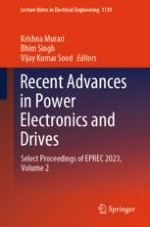This book entitled “Recent Advances in Power Electronics and Drives - Select Proceedings of EPREC-2023 provides rigorous discussions, case studies, and recent developments in the emerging areas of power electronics, especially in power inverters and converters, electrical drives, regulated power supplies, electric vehicle and its charging infrastructure, etc. The readers would benefit from enhancing their knowledge and skills in the domain areas. Also, this book may help the readers in developing new and innovative ideas. The book can be a valuable reference for beginners, researchers, and professionals interested in advancements in power electronics and drives.
